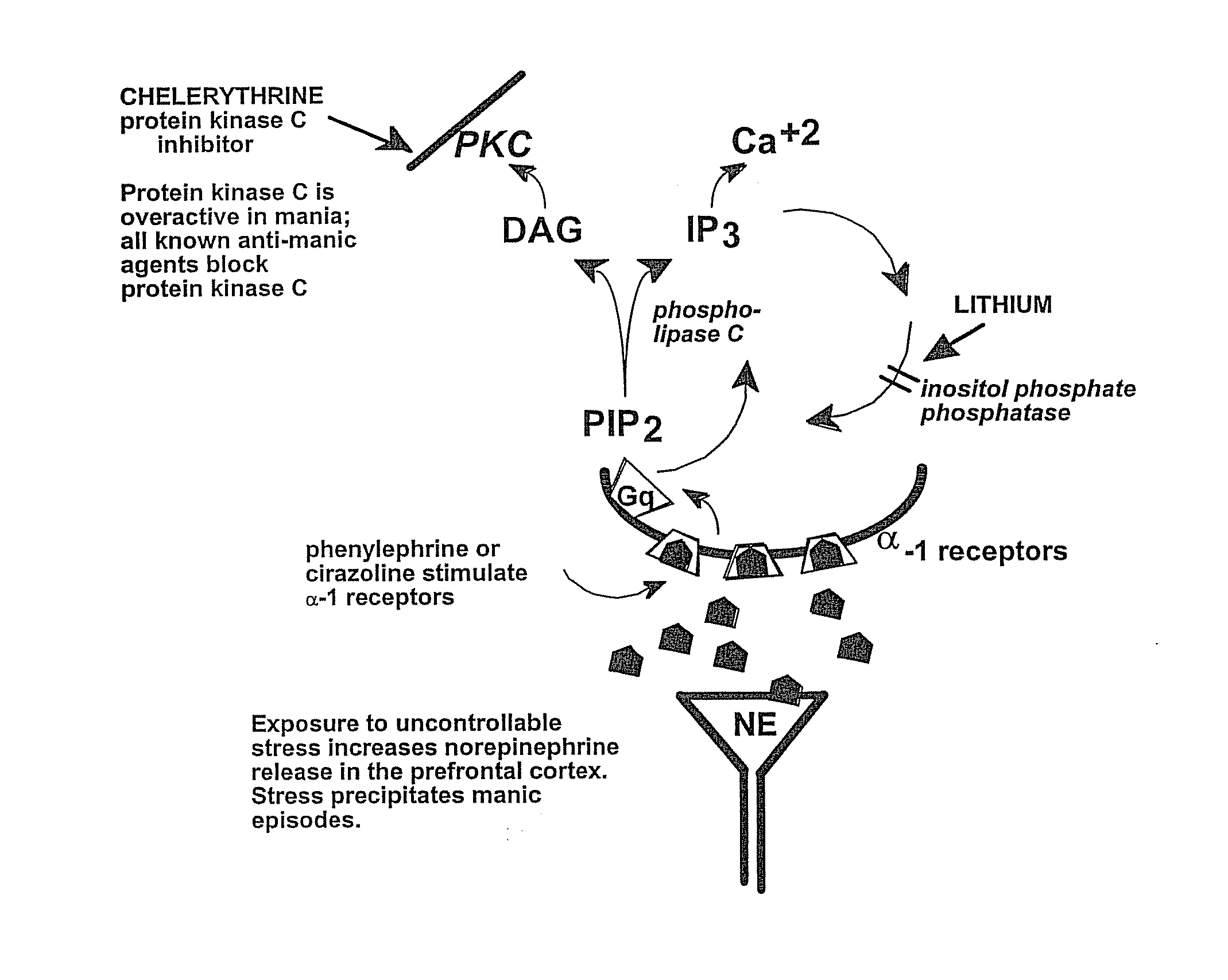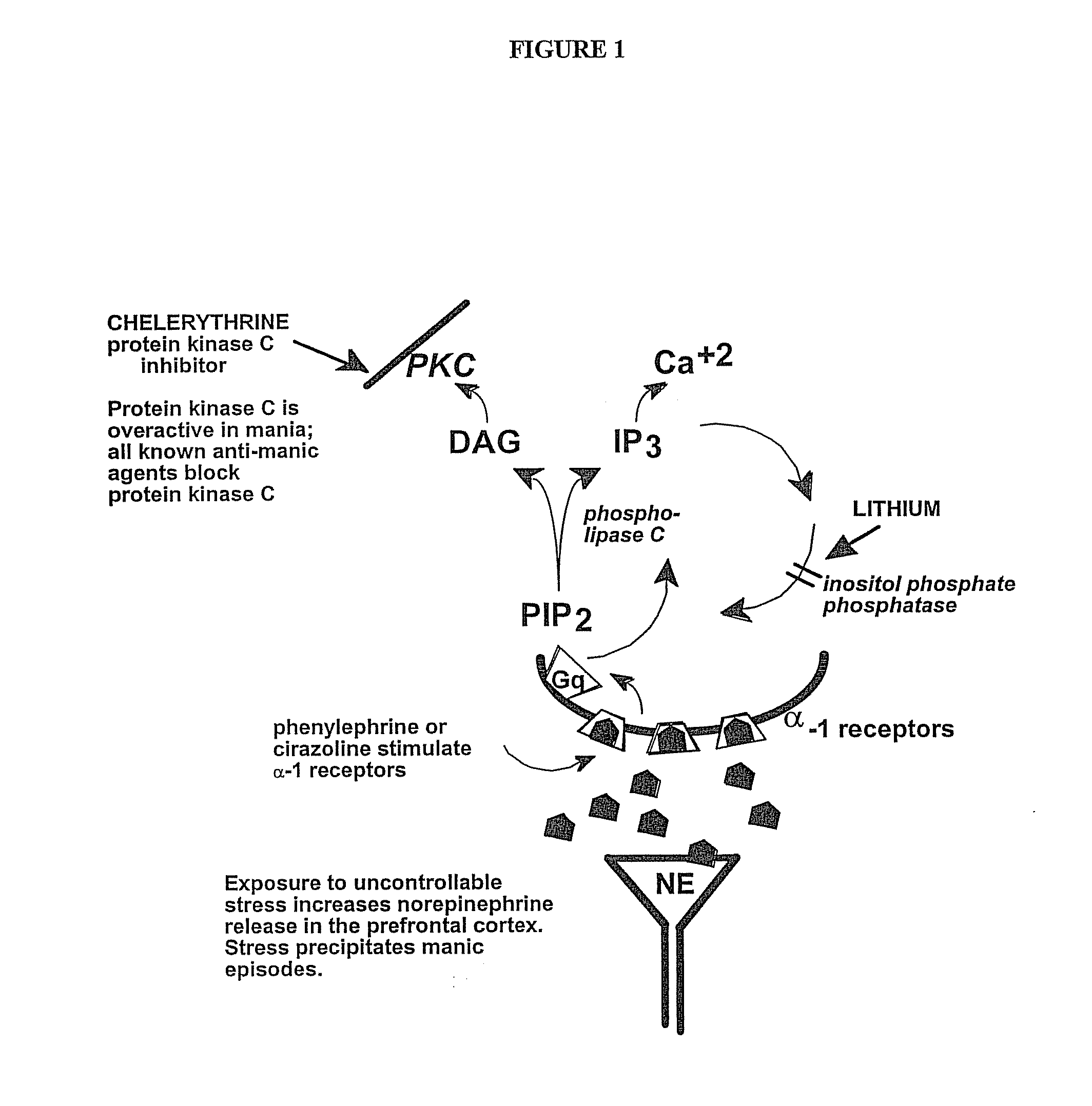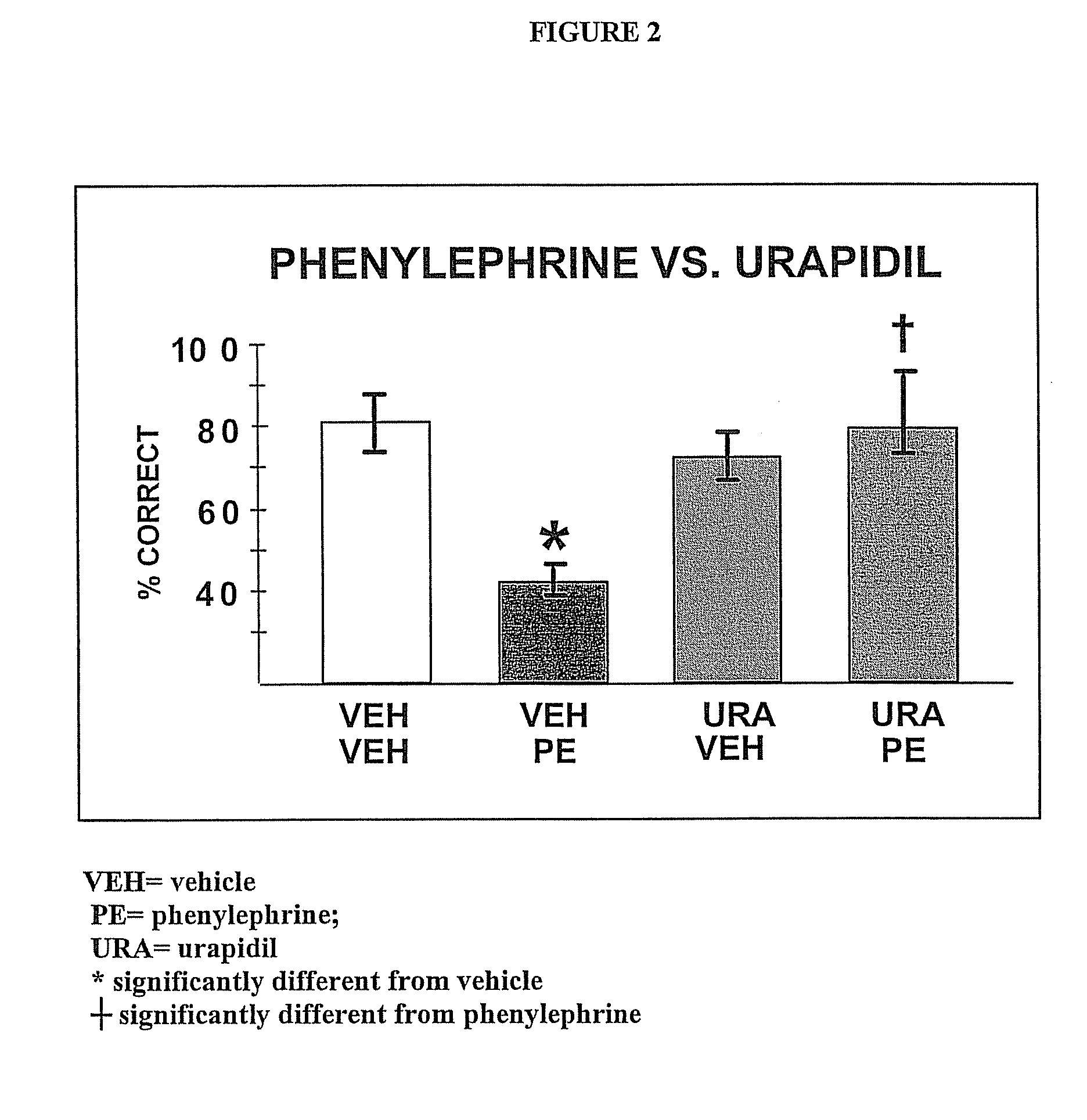Chelerythrine, analogs thereof and their use in the treatment of bipolar disorder and other cognitive disorders
a technology which is applied in the field of chelerythrine and chelerythrine analogs, can solve the problems of prefrontal cortex dysfunction, poor judgment, and prefrontal cortex dysfunction, and achieve the effects of impaired delayed response performance, impaired delayed alternation performance, and increased time to compl
- Summary
- Abstract
- Description
- Claims
- Application Information
AI Technical Summary
Benefits of technology
Problems solved by technology
Method used
Image
Examples
example 1
[0081]Rats were injected with 0, 0.3, or 3.0 mg / kg chelerythrine s.c. in water approximately 45 minutes before cognitive testing; they receive an injection of the pharmacological stressor, FG7142 (15 mg / kg, i.p.) or vehicle 30 minutes prior to cognitive testing. All drug treatments occur at least one week apart, and the order of treatments is counterbalanced between animals. As illustrated in FIG. 8, injection of the lower dose of chelerythrine (0.3 mg / kg, s.c., 45 min) significantly reversed the detrimental effects of stress exposure (p=0.018, n=4). The higher dose of chelerythrine (3.0 mg / kg) did not reverse the cognitive deficits due to stress, although it had no effect on behavior on its own (average of 72.5% correct, similar to vehicle). Careful behavioral observations in the home cage and during cognitive testing indicated no significant side effects with chelerythrine administration by itself at either dose; occasionally animals were reported to be “a little slower but normal...
example 2
[0082]Chelerythrine was administered orally to rhesus monkeys at doses of either 0.03 / kg or 0.3 mg / kg 60 min before cognitive testing, 30 minutes prior to stress exposure (FG7142 0.2-1.0 mg / kg, i.m.). In addition to cognitive testing, monkeys are also assessed for changes in sedation, agitation, aggression, motivation, food intake, and both fine and gross motor abilities. Four monkeys were tested. Chelerythrine pretreatment significantly reversed the detrimental effects of stress on prefrontal cortical function (FIG. 9; p<0.05, n=4). Half of the monkeys showed complete protection with the 0.03 mg / kg dosage; the other half required 0.3 mg / kg for full reversal. Chelerythrine by itself had no effect on cognitive performance, and was well-tolerated with no side effects at either dose. Combined dose data are shown in FIG. 11.
PUM
| Property | Measurement | Unit |
|---|---|---|
| boiling point | aaaaa | aaaaa |
| CNS disorder | aaaaa | aaaaa |
| hyperactivity disorder | aaaaa | aaaaa |
Abstract
Description
Claims
Application Information
 Login to View More
Login to View More - R&D
- Intellectual Property
- Life Sciences
- Materials
- Tech Scout
- Unparalleled Data Quality
- Higher Quality Content
- 60% Fewer Hallucinations
Browse by: Latest US Patents, China's latest patents, Technical Efficacy Thesaurus, Application Domain, Technology Topic, Popular Technical Reports.
© 2025 PatSnap. All rights reserved.Legal|Privacy policy|Modern Slavery Act Transparency Statement|Sitemap|About US| Contact US: help@patsnap.com



